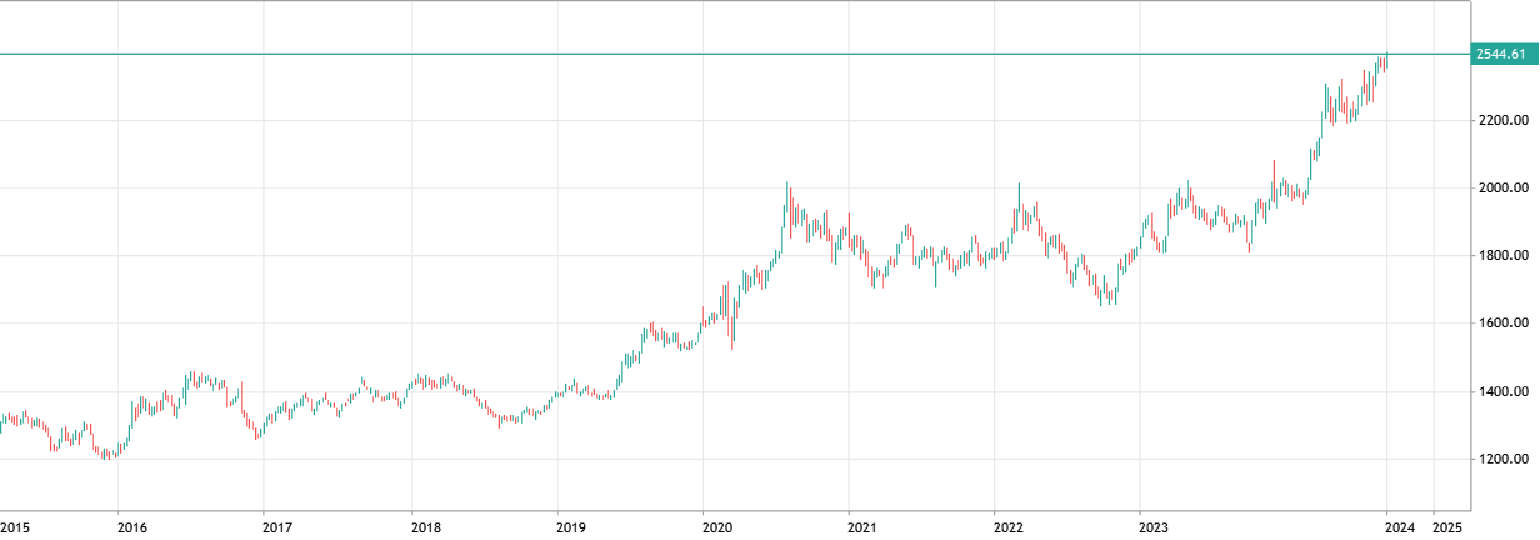
There are many trading strategies in Forex, and they can easily be grouped by how often traders open and close positions. These include scalping, day trading, and swing trading. But there’s also a strategy called position trading. While it originated in the stock and commodity markets, some traders are trying to adapt it to Forex.
In this article, we’ll explore the advantages and disadvantages of position trading in the context of Forex and other instruments available through AMarkets.
What is Position Trading?
A well-known debate among traders involves Warren Buffett and hedge fund managers. Buffett argued that a simple investment in an S&P 500 index fund would outperform actively managed hedge funds. He reasoned that the fees and commissions associated with frequent trading and high management compensation would significantly erode profits. Over a 10-year period, Buffett proved to be correct, winning a $1 million bet.
Such a long-term investment approach, focusing on profiting from global trends rather than short-term price fluctuations, represents position trading. Traders who employ this strategy rely on fundamental analysis and avoid frequent changes to their positions due to temporary setbacks. Let’s delve into the advantages and disadvantages of position trading.

Advantages
Lower trading costs. Position traders typically make fewer trades than day traders, which means they pay fewer transaction fees, such as spreads and commissions. This can significantly reduce overall trading expenses, making it more cost-effective in the long run.
More time for other activities. Unlike scalpers, who need to constantly monitor the market, position traders can check their positions less frequently. This frees up time for other activities and makes position trading a more flexible strategy for those who can’t be glued to their screens all day.
Reduced stress and better decision-making. The longer time horizon of position trading helps traders avoid the emotional pitfalls of short-term trading. By focusing on fundamental analysis and long-term trends, traders are less likely to make impulsive decisions, allowing for more rational and objective trading choices.
Disadvantages
Range-bound markets. Some instruments don’t show clear trends and may move sideways for long periods. For instance, if you look at the EUR/USD chart over the past 17 years, you’ll notice that while there was a trend earlier on, the market has mostly traded in a range since 2015.
Even though it’s a wide range, it still limits profit potential for position traders.
Risk of unforeseen changes. The currency market can be highly unpredictable, with sudden shifts due to economic news or central bank decisions. Holding a position long-term can result in significant losses if unexpected market changes occur. Traders must sometimes remain calm for months while the market moves against them – a challenging task for many.
High capital requirements. Position trading often requires a larger starting capital, as traders need to set wider stop-losses and have the financial resilience to weather temporary losses.
Swap accumulation. When holding positions overnight, traders pay swap fees. Over time, these fees can accumulate and eat into profits, especially when positions are held for an extended period.
Less flexibility. Position traders don’t react to short-term market movements, which means they might miss out on opportunities that day traders or scalpers could take advantage of, like sudden price spikes or dips.
Beyond Forex
At AMarkets, you can trade not only currency pairs but also hundreds of CFDs. If you’re interested in trying position trading, you might want to explore instruments like gold or stock indices. Here are charts of some options to consider for long-term trading:
XAU/USD
DowJones30
Nasdaq100
With some spare capital, these instruments can be worth considering for position trading.
Conclusion
So, is position trading suitable for Forex traders? Based on the pros and cons, it may not be the best approach for most traders. However, if you have a strong understanding of the fundamental factors driving the global economy, sufficient capital, and the patience to wait out long market fluctuations, position trading could be a useful strategy for diversifying your risks. Besides currency pairs, you may also want to consider CFDs with clear long-term trends.










